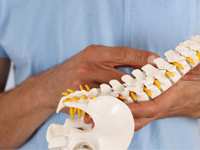- Categories :
- More
Are there Different Kinds of Spinal Decompression?

Are you struggling with chronic back or neck pain? Spinal decompression may offer an effective solution for your symptoms. The treatment relieves pressure on spinal nerves and discs, easing pain. Non-surgical decompression offered by chiropractors offers a way to treat your pain.
What Is Spinal Decompression?
Pain, numbness, or tingling can occur if bones, discs, or tissues press on the spinal cord or the nerves that extend from the spinal cord. Spinal decompression creates more space in the spinal column, which reduces pressure and pain and promotes healing.
The treatment may be helpful if you have:
- Chronic Back or Neck Pain
- Numbness or Tingling in Your Arms and Legs
- Frequent Muscle Spasms
- Trouble Moving Easily
- Trouble Sitting or Standing for Long Times
- Frequent Headaches
These problems can be caused by:
- Facet Joint Syndrome
- Herniated or Bulging Discs
- Sciatica
- Degenerative Disc Disease
- Spinal Stenosis
- Pinched Nerves
- Arthritis
Chiropractic Spinal Decompression Options
Chiropractic spinal decompression could delay the need for surgery or prevent it entirely. Your chiropractor offers these types of non-invasive spinal decompression:
- Manual Spinal Decompression. Chiropractors use gentle pressure from their hands to stretch the spine, increase the space between the vertebrae, and relieve pressure. Your doctor adjusts the angle or the intensity of the treatment based on your feedback. Manual spinal decompression isn't painful, although you may notice a pulling or stretching sensation during the treatment.
- Mechanical Spinal Decompression. Mechanical spinal decompression is performed on a special table and uses computer-controlled traction to precisely stretch the spine. The treatment alternates periods of stretching with relaxation.
In addition to reducing pressure on nerves, spinal decompression:
- Relieves Pain
- Creates Negative Pressure That Draws Herniated or Bulging Discs Back Into Place
- Reduces Inflammation and Irritation
- Improves Circulation and Increases the Flow of Nutrients to the Spine
- Increases Range of Motion
According to a case series published in the Journal of Contemporary Chiropractic in 2025, non-surgical decompression may offer an effective way to improve pain and disability. The case series evaluated the effects of 20 sessions of mechanical spinal decompression on patients with lumbar intervertebral disc lesions. Intervertebral disc lesions happen when part of a spinal disc begins to bulge outward, pressing on nerves.
Spinal discs are located between the vertebrae in the spine. The discs absorb shock and help you move your back and neck easily. Patients who received mechanical spinal decompression treatment experienced an 80% improvement in pain, 50% improvement in disability, and improvements in disc height after the treatments.
Another study published in BMC Musculoskeletal Disorders in 2022 explored the benefits of non-surgical decompression and physical therapy for lumbar radiculopathy. Lumbar radiculopathy occurs due to a pinched nerve in the lower back. The condition may cause sciatica (pain that extends from the lower back to the buttock, hip and back of the leg), muscle cramps, difficulty walking, and weakness, numbness, or tingling in the leg or foot.
Researchers determined that non-surgical spinal decompression combined with physical therapy was more helpful than physical therapy alone in improving pain, range of motion, disability, and quality of life.
Feeling frustrated by your back or neck pain? Spinal decompression treatment could improve your symptoms. Contact our office to schedule an appointment with the chiropractor
Sources:
Cleveland Clinic: Spinal Decompression Therapy, 1/18/2022
https://my.clevelandclinic.org/health/treatments/10874-spinal-decompression-therapy
Journal of Contemporary Chiropractic: Clinical and Imaging Outcomes of Non-Surgical Spinal Decompression for Lumbar Intervertebral Disc Lesions: A Case Series, 3/7/2025
BMC Musculoskeletal Disorders: Effects of Non-Surgical Decompression Therapy in Addition to Routine Physical Therapy on Pain, Range of Motion, Endurance, Functional Disability and Quality of Life Versus Routine Physical Therapy Alone in Patients with Lumbar Radiculopathy; A Randomized Controlled Trial, 3/16/2022
https://bmcmusculoskeletdisord.biomedcentral.com/articles/10.1186/s12891-022-05196-x
SPINE-Health: How Spinal Decompression Therapy is Thought to Work, 9/24/2013
https://www.spine-health.com/treatment/chiropractic/how-spinal-decompression-therapy-thought-work

















